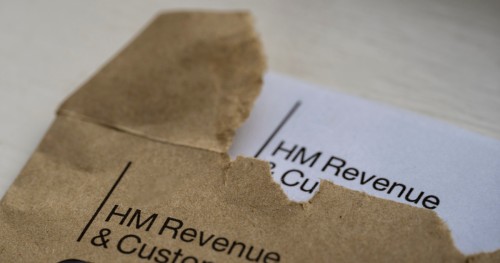Tax rates and allowances for tech contractors in 2024/25

With April fast-approaching, it’s high time tech freelancers looked ahead to the new tax year, which begins on April 6th 2024.
2024/25 rates and allowances are a must-know -- if money matters
Crucial to working out your tech freelancer take-home pay in the coming months, are the tax rates and allowances for this new tax year -- 2024/2025.
With an understanding of any changes that could affect your tax liabilities -- and therefore an understanding of what us accountants call your ‘renumeration strategy’ -- you can start to plan.
So let’s talk tax rates and allowances for tech contractors in 2024/25, keeping in mind how these HMRC-set thresholds will affect your earnings and your limited company’s bottom line, writes Christian Hickmott, managing director of contractor accountancy firm Integro Accounting.
The big Spring Budget 2024 caveat
Before we dive in, it’s important to note that chancellor Jeremy Hunt’s Spring Budget on Wednesday March 6th may bring some changes to tax rates and allowances in 2024/24.
Either way, his Spring Budget 2024 will confirm all the key allowances for the next tax year so this guide is exactly that – a guide on what we know of 2024/25 tax rates which is subject to Mr Hunt upending your rates and allowances next month!
2024/2025 Personal tax allowances and rates
England & Wales
The tax-free personal allowance is due to remain unchanged from the 2023/24 tax year (which ends on April 5th 2024) at £12,570.
Unfortunately for contractors, it’s a rate that (currently) isn’t due for review until 2028. This means that on earnings up to this amount, for 2024/25 and quite a bit beyond, you’ll not be liable to pay tax under earnings of £12,570.
For income you receive over the personal tax allowance, different tax rates will apply depending on your income banding -- as below.
These bandings for 2024/25 also remain unchanged from 2023/24:
Your earnings (England & Wales) ---- Per cent of tax to pay
Between £12,571 - £50,270 --- 20% (Basic rate) – 8.75% dividend rate
Between £50,271 and £125,140 --- 40% (Higher rate) – 33.75% dividend rate
£125,141 and over --- 45% (Additional rate) – 39.35% dividend rate
Personal tax rates in Scotland
In Scotland, the personal tax-free allowance is also £12,570.
However, there will be a significant change in 2024/25 to the way in which non-savings or investment income are taxed, which sees the introduction of the ‘advanced’ rate of tax and an increase of the ‘top’ rate of tax from 47% to 48%.
Your earnings (Scotland) --- Per cent of tax to pay
Between £12,571 - £14,876 --- 19% (Starter rate)
Between £14,877 – £26,561 --- 20% (Basic rate)
Between £25,562 - £43,662 --- 21% (Intermediate rate)
Between £43,663 - £75,000 --- 42% (Higher rate)
Between £75,001 – £125,140 --- 45% (Advanced rate)
Over £125,140 --- 48% (Top rate)
The tax rates and bands for savings and dividend income for Scotland remain the same as the rest of the UK.
Personal allowance: abatement and transfers
As in previous years, those tech contractors with unused personal allowances may find it is beneficial to transfer part of their allowances (10%/£1,260), to their spouse or civil partner – also known as the Marriage Allowance.
Those with adjusted income of more than £100,000 will continue to lose their entitlement to their personal allowance by £1 for every £2 earned over £100,000. For example, a freelance IT contractor with an income of £110,000 will lose £5,000 of their personal allowance and be entitled to just £7,570.
Reduction in Dividend tax thresholds/ rates allowances
Tax year 2024/25 will see a further reduction in the dividend allowance, being reduced from £1,000 (in 2023/24) to just £500.
National Insurance
The Autumn Statement 2023 announced National Insurance Contribution (NIC) cuts to class 1, class 2 and class 4 NICs. These cuts were introduced on January 6th 2024.
Here, we’ll focus on Class 1 NICs as these are applicable to employees -- which would include a limited company director.
So, since 06.04.24, the rate you pay on salaries between £12,570 and £50, 270 fell from 12% to 10%, however for earnings over £50,270, the rate of 2% did not change.
Whether this could change further for 2024/25 is yet unknown. Of course, whether this cut will benefit you as a contractor in tech or any other sector will depend upon the salary you take, as NICs don’t apply on dividends.
Corporation Tax rates 2024/2025
Corporation Tax rates at present are expected to remain the same as 2023/24, being up to 25% on profits over £250,000. But the rate is 19% for a limited company with profits of £50,000 or under. Those directors with company profits in between these thresholds will pay corporation tax using a hybrid rate, somewhere between 19% and 25%.
Capital Gains Tax
The capital gains allowance will be reduced again in 2024/25 to just £3,000.
This reduction will be particularly important for those techies who are coming to the end of their contracting life and who will be looking to close their limited company.
Business Asset Disposal Relief or BADR, formerly known as Entrepreneurs’ Relief, is scheduled to remain the same, with a lifetime allowance of £1million and a reduced capital gains tax rate of 10%.
Your personal tax as a limited company contractor
Contracting through your own limited company, you’ll be considering both your own tax liability, and that of your company.
So, looking at the above rates, how can you ensure you’re at your most tax-efficient when you want to draw profits from your company?
Well, with a little bit of planning, your accountant should be able to recommend the amount of salary you should draw, and it could be that a mix of salary and shareholder dividends might be the best option for you, given the different tax rates that dividends will be subject to as well as the dividend allowance.
Or it could be that you’d like to leave a little in the company to invest.
Well, timing could be key, so chatting this through sooner rather later will put you in the best position.
Tax rates and allowances in 2024/25: final review
In summary, when you’re nearing the end of a tax year – as we are right now -- it’s prudent to look ahead and plan your renumeration strategy for the coming tax year.
This should include ensuring you are utilising your allowances and maximising your take home-pay as tax efficiently as possible.
But heed our warning! We must all wait on what the chancellor has in store for us on March 6th, even though a financially-shrewd contractor will start planning their strategy today. To really optimise your take-home, talk it through with an accountant.
Christian Hickmott has over 20 years of accountancy and working practice knowledge. He understands the wants and needs of contractors, having lead some of the largest accountancy firms in the business before founding Integro Accounting in 2013. A multi-award-winning brand based on integrity, trust and loyalty.




Comment
Log in or create your account to react to the article.